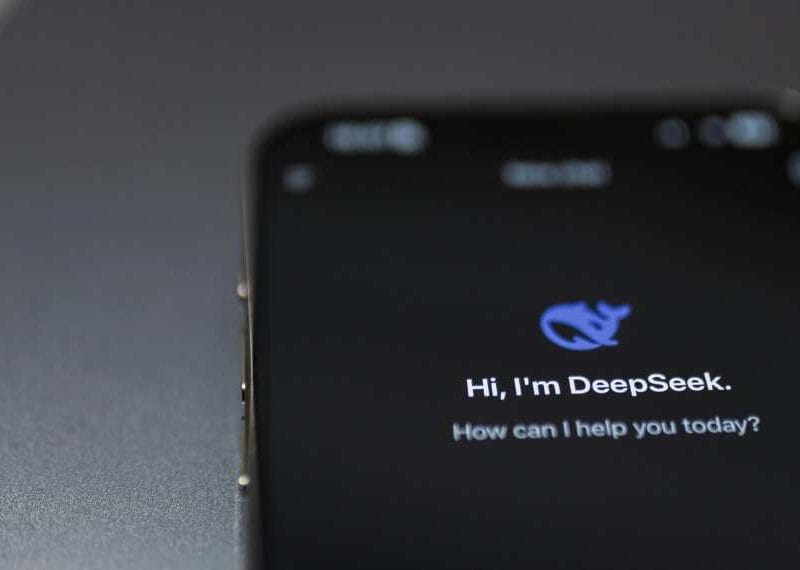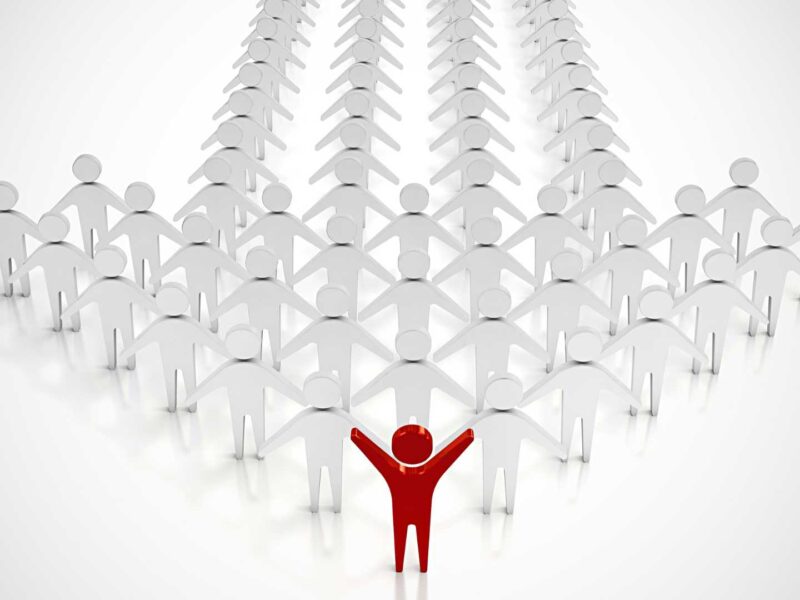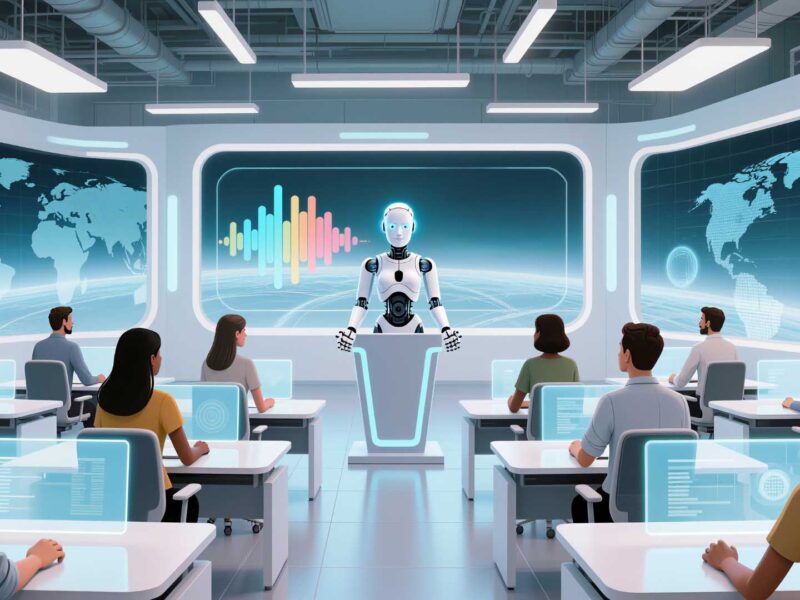Unleashing AI Potential: What’s the Key to Accelerating AI for Social Progress?
Get ready to be inspired!
AI has the power to revolutionize lives and tackle big societal issues like healthcare gaps and climate change.
But how do we make sure AI works for social good with impact and fairness?
In this exciting article, The Techronicler team rounded up game-changing insights from business trailblazers, community heroes, and visionary innovators to answer one bold question:
What’s one way to supercharge AI for social good while addressing urgent needs?
Their answers are bursting with fresh strategies, dynamic partnerships, and next-level tech to skyrocket AI’s role in building a brighter future.
From championing inclusive data to forging cross-sector collaborations and tapping into open-source platforms, these leaders drop actionable ideas to spark real change.
Dive in with us to uncover how AI can be a force for good, uplifting underserved communities and crushing global challenges.
Let’s explore the ideas shaping AI’s future for social impact and find out how we can team up to unleash its potential for a fairer, more awesome world!
Read on!
AI Tools Meet People Where They Are
One way to accelerate the use of AI for social good is to embed it into low-barrier tools that meet people where they already are, especially in underserved or emotionally sensitive areas like mental health, education, or public service.
At Aitherapy, we’ve seen how something as simple as 24/7 access to AI-powered emotional support can make a real difference for people who can’t afford or access therapy. The key isn’t just the tech, it’s designing AI to feel safe, private, and human enough to be trusted.
To scale this impact, we need stronger partnerships between AI builders and nonprofits, government, and public health organizations. These collaborations can shift AI from a “cool product” to a critical utility.
AI for social good isn’t about building flashier models. It’s about designing context-aware, emotionally intelligent tools that fit into real lives, quietly, respectfully, and at scale.

Ali Yilmaz
Co-founder & CEO, Aitherapy
Open-Source Platforms Break Social Good Barriers
Currently, many social good initiatives leveraging AI are bespoke, often siloed projects.
A non-profit addressing food insecurity might build a predictive model, while another tackling disaster relief develops a different AI tool.
This leads to:
-Duplication of effort: Reinventing the wheel for similar underlying AI challenges.
-Limited scalability: Solutions are hard to adapt and deploy elsewhere.
-Lack of collective intelligence: The brilliant minds working on these problems aren’t easily sharing insights or building upon each other’s work.
-Accessibility barriers: Smaller organizations without deep pockets or technical expertise struggle to even get started.
Open-source AI agent platforms, designed with social good as their core mission, can shatter these barriers. Imagine a GitHub-like ecosystem, but specifically for modular, ethically-aligned AI agents focused on areas like public health, environmental sustainability, education, and humanitarian aid.
But, we need to move beyond monolithic AI applications to discrete, interoperable AI agents. This means developing open standards for how these agents communicate, share data (securely and ethically), and perform specific tasks.
Think of it like microservices for AI, allowing developers to pick and choose “blocks” of functionality. For example, a “data anonymization agent” could be universally applied across various social good projects without being rebuilt each time.
Governments, philanthropic organizations, and even corporations should sponsor significant, recurring “AI for Social Good” challenge sprints.
These aren’t just hackathons; they’re sustained, incentivized programs where teams develop and contribute AI agents to the open platform to solve specific, well-defined societal problems (e.g., “AI agent for early warning of emerging infectious diseases,” “AI agent for optimizing last-mile aid delivery”). Bounties could be awarded for performance, ethical alignment, and reusability.
With all this in mind, “Ethical AI Agent Registries” and Responsible AI Guardrails for social good, trust is paramount.
The platform must include mechanisms for transparently documenting an AI agent’s purpose, data sources, ethical considerations, and performance metrics. This fosters accountability and ensures that AI is used to empower, not exploit.
The challenge is immense, but so is the potential reward.
Fund Infrastructure, Not Isolated Innovation
To accelerate the use of artificial intelligence for social good, we need to move beyond isolated innovation and start funding frictionless infrastructure—public data ecosystems, accessible model APIs, and ethics-first frameworks that make it easier for people to build with purpose, not just profit.
One of the biggest blockers I see when working with early-stage teams and scale-ups is not ambition, but access.
The smartest minds in climate tech, healthcare, education—often outside the Silicon Valley bubble—are stuck wrestling with fragmented tooling, gated datasets, and compliance mazes. We need to bridge that gap with partnerships between regulators, researchers, and AI builders that remove technical and bureaucratic bottlenecks without diluting accountability.
In my work designing go-to-market and growth systems across high-impact startups, I’ve seen firsthand how much faster innovation moves when small teams can plug into trusted AI infrastructure—think open-source libraries backed by academic rigour, or sandbox environments where social entrepreneurs can test sensitive use cases (like in aged care or disaster relief) without the fear of legal fallout.
And here’s the kicker: it’s not just about building for social good—it’s about with and by. Community-first product thinking, where co-design with end users is the default, not a phase. If we treat AI like a top-down silver bullet, we’ll miss its real power: scaling local solutions globally, while still grounded in the nuance of lived experience.
The tech is ready. What we need now is collective courage, shared standards, and systems thinking that sees AI not as an endpoint—but as an enabler.
Community-Focused Partnerships Build Trust Through AI
In my experience, one of the best ways to accelerate AI for social good is to build strong partnerships between local governments, tech companies, and community organizations.
A few years ago, I worked with a municipal IT group that was struggling to deliver services quickly. They had outdated systems, overworked staff, and too many disconnected tools. We helped them connect with an AI provider focused on automation.
The result wasn’t just faster response times—it was greater trust from residents who felt heard and respected. That only happened because the right people were talking and working together toward the same goal.
Another key strategy is making sure AI systems are designed with the community in mind. I’ve seen too many cases where tech gets rolled out without enough thought to who’s using it.
During a digital literacy training we ran for a senior center in Oakland, I saw firsthand how important it is to match the tools with people’s needs. An AI tool that adjusts learning content to fit someone’s pace? Game changer. But only if it’s explained clearly and feels approachable.
Social impact comes when people feel empowered, not left behind.
If I had one piece of advice for those working in tech, it would be this: don’t build in a vacuum.
Listen. Test with real people. Partner with nonprofits who know the communities you’re trying to help.
AI has the power to close gaps—in education, healthcare, government—but it won’t happen without honest feedback and shared goals.
The tech is already impressive. What matters now is making sure it’s used with care.

Elmo Taddeo
CEO, Parachute
Embedded Experts Solve Real Problems First
A few years ago, my small AI consultancy partnered with a local mental-health nonprofit for what we called an “AI for Good Residency.” We embedded one of our data scientists in their office for three months, working shoulder-to-shoulder with counselors and intake coordinators instead of building a solution in isolation.
On day one, we expected to jump straight into sentiment-analysis models on their chat transcripts. By day three, we discovered a far bigger bottleneck: volunteers were manually anonymizing every message before it ever hit the case file, spending up to four hours each week just redacting names and locations. That meant real insights were delayed by days, and data-driven triage was impossible.
So we shifted focus. Rather than fine-tuning the fanciest language model, we built a tiny Python tool—just 200 lines—that used a lightweight named-entity recognizer to strip personal details and auto-tag conversation themes (crisis, medication questions, scheduling).
Within weeks, anonymization time fell by 80 percent, and our partners could safely centralize all transcripts for real-time trend analysis. That simple tool is now open-sourced on GitHub, and two other nonprofits have adopted it verbatim.
Embedding our expert on the ground—listening, observing, then co-designing—was the catalyst. It meant we didn’t solve the “wrong” problem, we solved the most painful one. And by open-sourcing our code, we turned a single three-month pilot into a community resource that any nonprofit can adapt without hiring an ML team.
Action you can take: Launch a micro-residency or fellowship with a mission-driven organization in your city.
Even if all you contribute is four hours a week of developer time for two months, the domain experts will surface challenges you’d never uncover remotely—and the rapid feedback loop will deliver a tool that actually moves the needle.
Package your work as an open-source starter kit, share it on social channels, and watch other groups pick it up. That blend of embedded collaboration and open distribution is, in my experience, the fastest way to turn AI from a buzzword into tangible social impact.

Patric Edwards
Founder & Principal Software Architect, Cirrus Bridge
Field Partnerships Align AI With Grassroots Needs
One way I’ve seen real traction in using AI for social good is through partnerships with domain experts outside of tech.
A few years ago, I worked with a nonprofit tackling food insecurity. They had deep community ties and data about supply and demand gaps, but no technical infrastructure. We built a lightweight recommendation system using off-the-shelf tools that helped them optimize food distribution routes based on need.
What made it effective wasn’t the model; it was the tight collaboration between technologists and people who understood the human side of the problem.
That experience convinced me that to accelerate AI’s social impact, we need more solid partnerships—teams where data scientists sit shoulder to shoulder with public health workers, educators, or housing advocates.
Too often, AI projects for social good are driven from the lab out, instead of the ground up.We need to flip that.
The best results I’ve seen came from aligning AI capabilities with grassroots knowledge and constraints from day one.
If we invest in these kinds of field-level alliances, the technology will follow in the right direction.
Embed AI Where Decisions Happen Daily
Forget building more AI that answers problems… build AI that asks better ones.
The fastest way to drive change is to embed those questions in places where decision-makers live. I mean schools, local governments, HR systems, payroll software, tax prep tools.
If every city utility dashboard asked, “Do you need rent relief this month?” and triggered an AI-powered routing system behind the scenes, now we are moving.
That does more than any TED talk or hackathon.
Fact is, the smartest tech does not need a shiny interface. It just needs to sit quietly where real decisions happen and make one of those decisions 2% smarter every day. Multiply that by 10 million users and you are talking serious impact… no headlines needed. Like I said, embed AI into the boring stuff. That is where real life happens.
Make AI boring. Make it everywhere. That is how you build actual equity.

Patrick Beltran
Marketing Director, Ardoz Digital
Business Objectives Drive Successful Social Impact
One of the most effective ways to accelerate AI for social good is to embed clear business objectives into collaborative projects between the private sector, NGOs, and academia.
In my consulting work, I have consistently seen that technology adoption succeeds when it is rooted in measurable outcomes and operational alignment, not just idealism.
For example, when advising global retailers and partners through ECDMA initiatives, we have found success in projects that link commercial incentives with societal benefits – like improving supply chain transparency to reduce food waste, or optimizing logistics to lower emissions.
To drive meaningful progress, companies need to view social good initiatives as integral to their core strategy, not as side projects. That means allocating real budgets, assigning experienced teams, and measuring results with the same rigor as any core business operation.
The most impactful AI applications often emerge where there is direct business value: automating accessibility features in digital commerce not only serves customers with disabilities but opens new markets; optimizing energy use in logistics both reduces costs and environmental impact.
Partnerships are crucial, but they must be structured for accountability and speed.
In our ECDMA Global Awards, we have seen that the strongest collaborations set shared KPIs at the outset and maintain regular executive engagement, not just technical coordination. Academic partners bring research depth, NGOs contribute on-the-ground insight, and businesses provide the operational engine to scale solutions.
The underlying technology matters, but the real accelerator is disciplined execution. Projects flounder when stakeholders lose focus or treat AI as a speculative add-on.
In practice, the organizations that accelerate AI for good are those that run pilots in real settings, iterate quickly, and then scale what works. This approach demystifies AI and ensures it actually solves pressing problems, rather than generating theoretical benefits.
Ultimately, embedding AI for social good into the rhythm of business, backed by operational discipline and structured partnerships, is what moves the needle.
It is not about chasing the latest trend, but about making AI a lever for strategic execution where commercial and societal objectives reinforce each other.
This is how we have seen real, lasting impact take root.
On behalf of the Techronicler community of readers, we thank these leaders and experts for taking the time to share valuable insights that stem from years of experience and in-depth expertise in their respective niches.
If you wish to showcase your experience and expertise, participate in industry-leading discussions, and add visibility and impact to your personal brand and business, get in touch with the Techronicler team to feature in our fast-growing publication.















